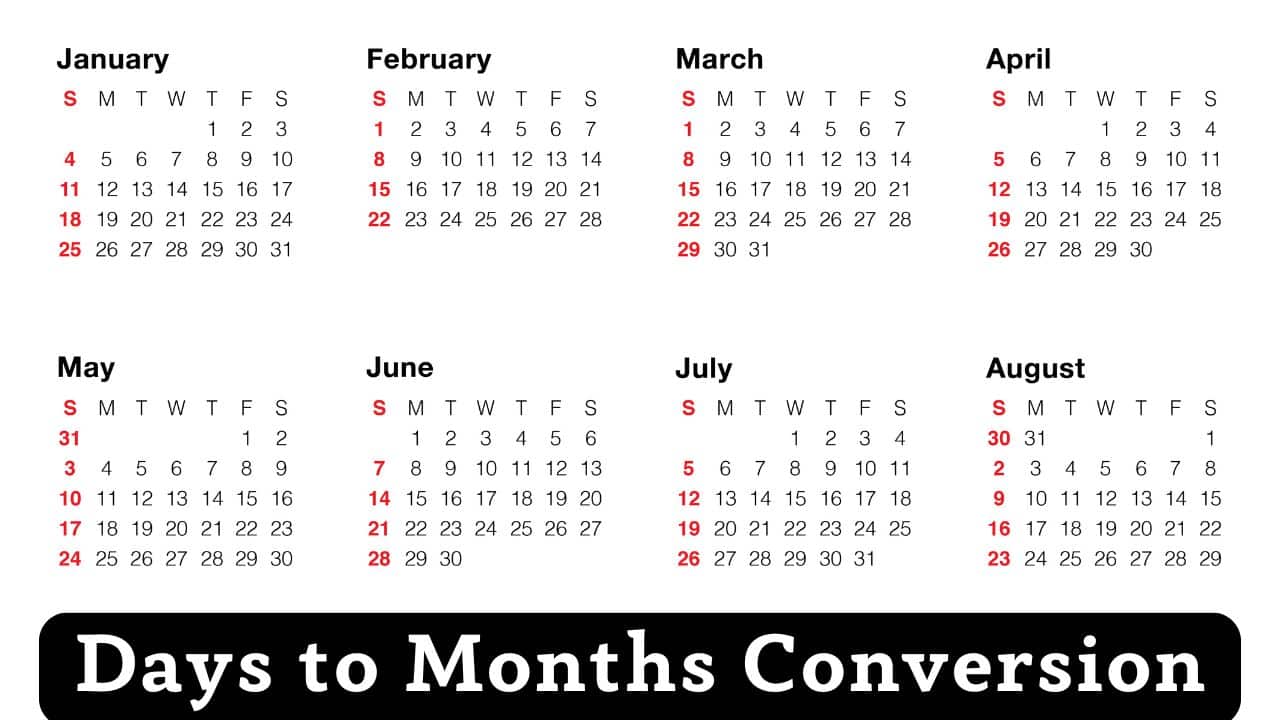Days to Months Calculator
Precise time conversion with detailed breakdowns, quick presets, and educational insights

How Many Days in Months
There are approximately 30.44 days in an average month. Converting between days and months requires understanding calendar variations, as months range from 28 to 31 days depending on the specific month and leap years.
The Conversion Formula
Months = Days ÷ 30.44
Days = Months × 30.44
The 30.44 factor represents the average days per month (365.25 ÷ 12), accounting for leap years and varying month lengths.
Example: 90 days ÷ 30.44 = 2.96 months, or 3 months × 30.44 = 91.31 days
Month Length Variations
Understanding month variations:
31 Days: January, March, May, July, August, October, December
30 Days: April, June, September, November
28/29 Days: February (28 in regular years, 29 in leap years)
Average month length: 30.44 days provides the most accurate general conversion
Quick Reference Table: Days to Months
| Days | Months | Weeks | Common Usage |
|---|---|---|---|
| 1 | 0.033 | 0.14 | One day |
| 7 | 0.230 | 1.00 | One week |
| 30 | 0.986 | 4.29 | Approximate month |
| 90 | 2.957 | 12.86 | Quarter (3 months) |
| 180 | 5.915 | 25.71 | Half year (6 months) |
| 365 | 11.993 | 52.14 | One year (12 months) |
Frequently Asked Questions
Why do we use 30.44 days per month?
We use 30.44 days per month because it’s the average month length (365.25 days ÷ 12 months). This accounts for the varying lengths of different months and leap years, providing the most accurate general conversion.
How do different months affect the calculation?
Individual months vary from 28-31 days. For precise calculations involving specific months, you’d need to account for the exact month lengths. Our calculator uses the average for general conversions.
What about leap years and February?
February has 28 days in regular years and 29 days in leap years. The 30.44 average already accounts for this variation over the long term, making it suitable for most conversion needs.
When would you need days-to-months conversion?
This conversion is useful for project planning, pregnancy tracking, subscription periods, age calculations, financial planning, and understanding time periods in more relatable monthly terms.
Interesting Calendar Facts
Historical Origins: Our 12-month calendar system dates back to ancient Rome. Julius Caesar introduced the Julian calendar in 46 BCE, which was later refined into the Gregorian calendar we use today.
Month Name Origins: Many month names come from Roman gods (January from Janus, March from Mars), numbers (September from septem meaning seven), or emperors (July from Julius Caesar, August from Augustus).
Practical Applications: Understanding days-to-months conversion helps in planning quarterly business cycles, tracking pregnancy milestones, calculating loan terms, and managing subscription services.
The irregular month lengths in our calendar system reflect thousands of years of cultural and astronomical influences, making average conversions essential for practical calculations.
